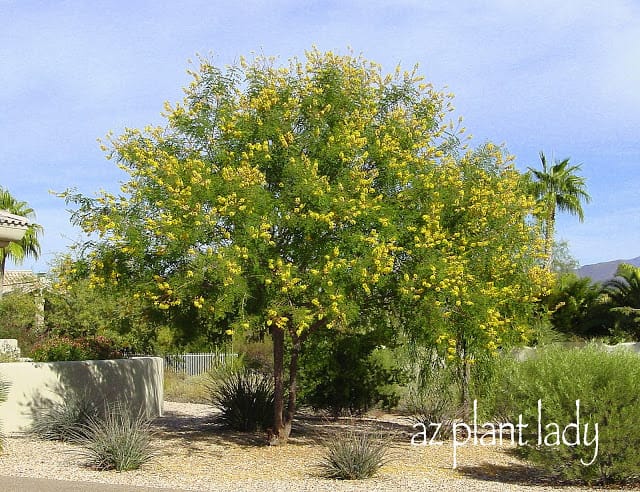
Want beautiful foliage, spectacular flowers all packaged up in a tree that blooms in fall and winter? Well, let me introduce you to a medium -sized tree with a funny name: Cascalote (Caesalpinia cacalaco).
I love this medium-sized tree with it’s circular leaves, textured bark and winter flowers. Native to Mexico, Cascalote produces beautiful yellow flowers during the cooler months of fall and winter. It is hardy to 20 degrees F, but will lose it’s leaves during if temperatures dip into the 20’s. At maturity, the approximate size is 20 ft. x 20 ft.
I bought my first Cascalote 11 years ago when my Plant Identification class took a field trip to the Boyce Thompson Arboretum. They were having a plant sale and I bought a 15-gallon size Cascalote, which I planted it against a west facing wall that received a lot of reflected sun and heat.
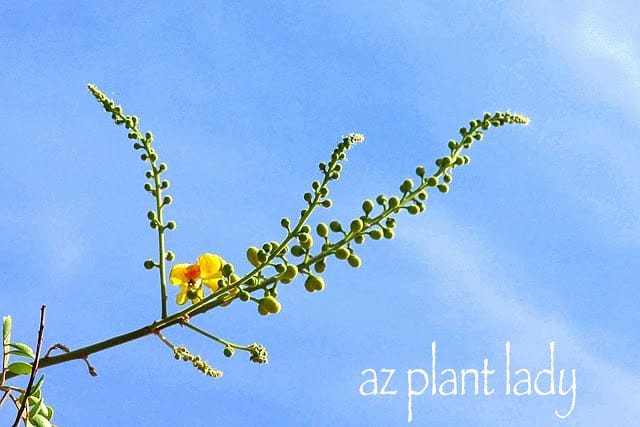
The yellow flowers are stunning when viewed against the backdrop of a deep blue sky. Early in November, they begin to produce tall spires of tightly bound yellow flower buds.
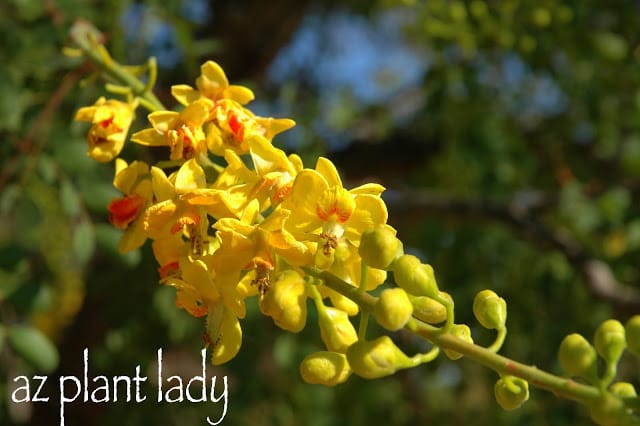
In mid to late November, the flowers begin to open, showing a blush of bright orange. In addition to being beautiful, the flowers also are lightly fragrant. The flowers are retained through February. Seed pods will soon follow the flowers.
USES: Cascalote thrives in hot locations and even in areas with reflected heat and should be planted in full sun. It looks great as the focal point of a planting area or can be used to provide shade to other plants and also makes a great patio tree.
I once planted one in a high profile corner of a commercial building with Radiation Lantana planted beneath. Because of the overlapping bloom seasons of the Lantana and Cascalote, there was always color year-round.
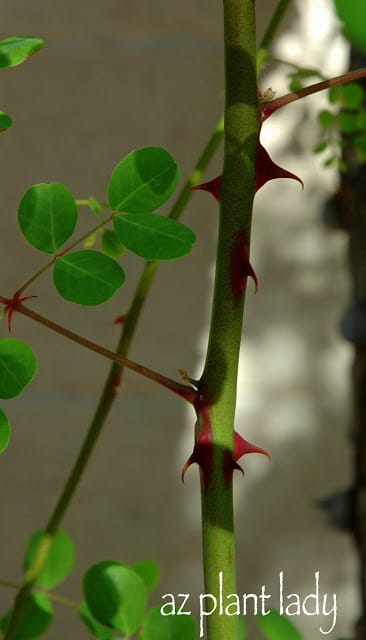
You might ask the question, “This tree sounds terrific. Are there any drawbacks?” Well, it does have thorns. Now, generally, I am not a huge fan of plants with thorns. However, I do make an exception in this case because the thorns are an ornamental feature of the tree. When the branches are young, the thorns appear maroon.
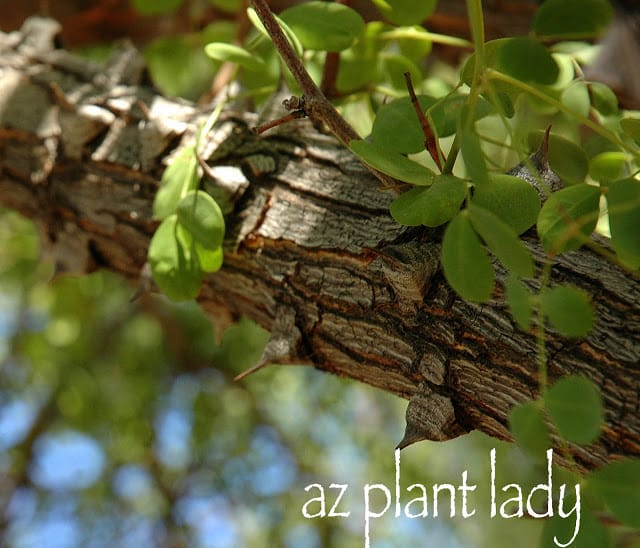
As they age, the thorns appear larger, yet still ornamental adding great texture to the appearance of the tree. That being said, I just prune off the tip of the thorns so that I don’t get scratched and the trees still retain the beauty that the thorns add.
*There is a thornless variety called (Caesalpinia cacalaco ‘Smoothie’).
MAINTENANCE: Cascalote is relatively a low-maintenance tree. It can be grown as a single or multi-trunk tree. Prune in the summer removing dead and crossing branches. Weekly irrigation is required throughout the summer and once monthly in the winter. I do not fertilize my Cascalote, but a slow-release or organic fertilizer can be applied if desired.

The nest of a Yellow Finch in my Cascalote
Occasionally, some Cascalotes have been affected in the springtime by an insect known as a Psyllid which is a tiny insect that sucks on the leaves causing the tree to lose it’s leaves. Look closely at the leaves and you will see little white dots and shiny honeydew on the leaves. The best method to take care of this problem is to diagnose it quickly and spray off the leaves with a strong jet of water everyday to help prevent more leaf loss. For those not opposed to using pesticides, applying a systemic insecticide such as Merit, (available in Bayer Advanced Garden Tree & Shrub Insect Control), will take care of the problem. If your tree has lost all of it’s leaves, they will grow back, but will require one of the two treatments in order for the tree to retain them and recover.
I have had Cascalote trees in landscape areas that I managed become infected, but by using one of the two methods above; took care of the problem. I would not hesitate to continue to use Cascalotes in the landscape because of their overwhelming, positive attributes.
I highly recommend planting this tree in your landscape. The beauty of it’s leaves, flowers and bark plus it’s ability to thrive in hot, reflected sun makes it an asset in any desert landscape.








